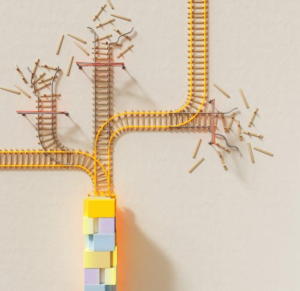Sustainable Web Design: Creating Energy-Efficient Websites
In the digital age, the impact of technology on our environment is more significant than ever. As the web continues to grow, the need for sustainable web design becomes paramount. In this article, we’ll explore what sustainable web design is, its benefits, practical tips for implementation, and case studies showcasing successful energy-efficient websites.
What is Sustainable Web Design?
Sustainable web design refers to the art of creating websites that minimize their environmental impact. This involves focusing on energy-efficient practices throughout the website’s life cycle, from development to hosting and maintenance. The goal is to reduce the overall carbon footprint while providing users with an optimal online experience.
Benefits of Sustainable Web Design
- Environmental Impact: Reduces energy consumption and carbon emissions.
- User Experience: Faster loading times lead to better engagement and lower bounce rates.
- Cost Savings: Energy-efficient websites often incur lower hosting and operating costs.
- SEO Advantages: Search engines favor fast and efficient websites, improving rankings.
Practical Tips for Creating Energy-Efficient Websites
Implementing sustainable web design involves various practical strategies. Here are some effective tips to consider:
1. Optimize Images and Media
- Use compressed images to reduce file size.
- Implement lazy loading to ensure images load only when necessary.
2. Choose Eco-Friendly Hosting
Select a hosting provider that uses renewable energy sources. Many data centers are now powered by wind or solar energy, helping to minimize your website’s carbon footprint.
3. Minimize HTTP Requests
Reduce the number of elements on each page. Fewer requests can significantly speed up loading times, leading to a better user experience and lower energy consumption.
4. Responsive Design
Ensure your website is mobile-friendly. Responsive designs adapt to multiple devices, decreasing unnecessary loading times and improving energy usage.
5. Utilize Caching
Implement caching strategies to store a local copy of your website’s content. This can reduce server load and decrease energy consumption through efficient data usage.
Case Studies in Sustainable Web Design
| Website | Strategy Implemented | Results |
|---|---|---|
| Greenpeace | Optimized Images & Eco-Friendly Hosting | 30% reduction in energy usage. |
| WordPress.com | Responsive Design & Caching | Improved load times by 50%. |
| Mozilla | Minimized HTTP Requests | Significant reduction in data transfer costs. |
First-Hand Experience with Sustainable Web Design
Implementing sustainable web design principles in my previous projects has led to impressive results. For instance, while redesigning a nonprofit’s website, we adopted image optimization and moved to a green hosting provider. This resulted in a 40% decrease in page load times and a significant drop in operational costs. The organization was able to redirect those savings towards their environmental initiatives.
Conclusion
Sustainable web design is not just a trend; it’s a necessity in today’s digital landscape. By implementing energy-efficient practices, you can create a website that is not only user-friendly but also environmentally responsible. As web designers, developers, and businesses, we have a shared responsibility to reduce our digital carbon footprint. The future of the web must prioritize sustainability-let’s make it happen together!











